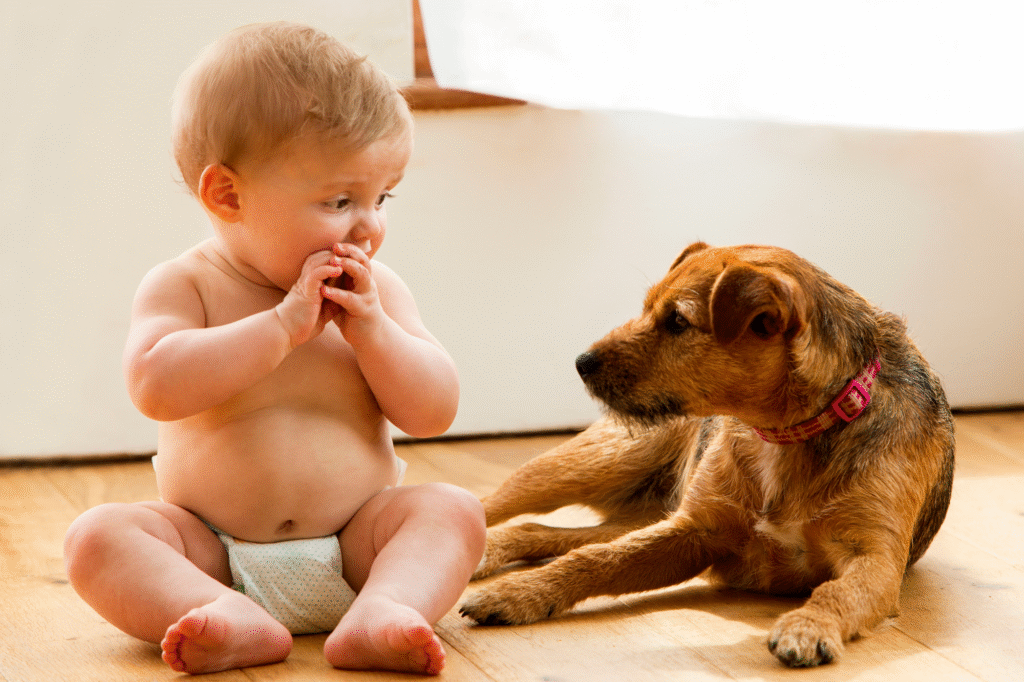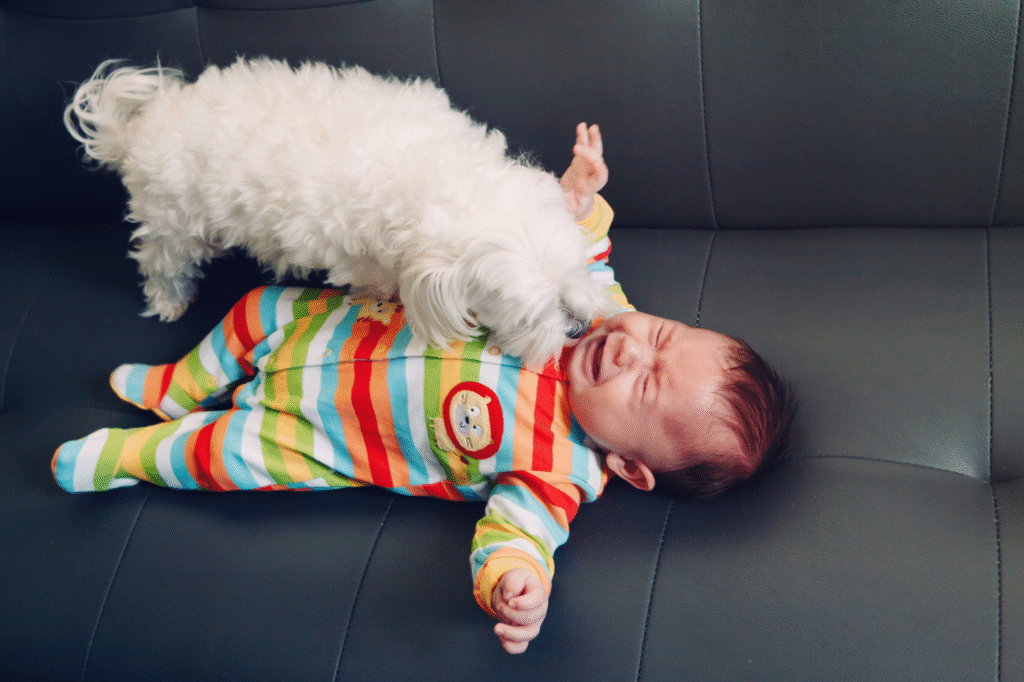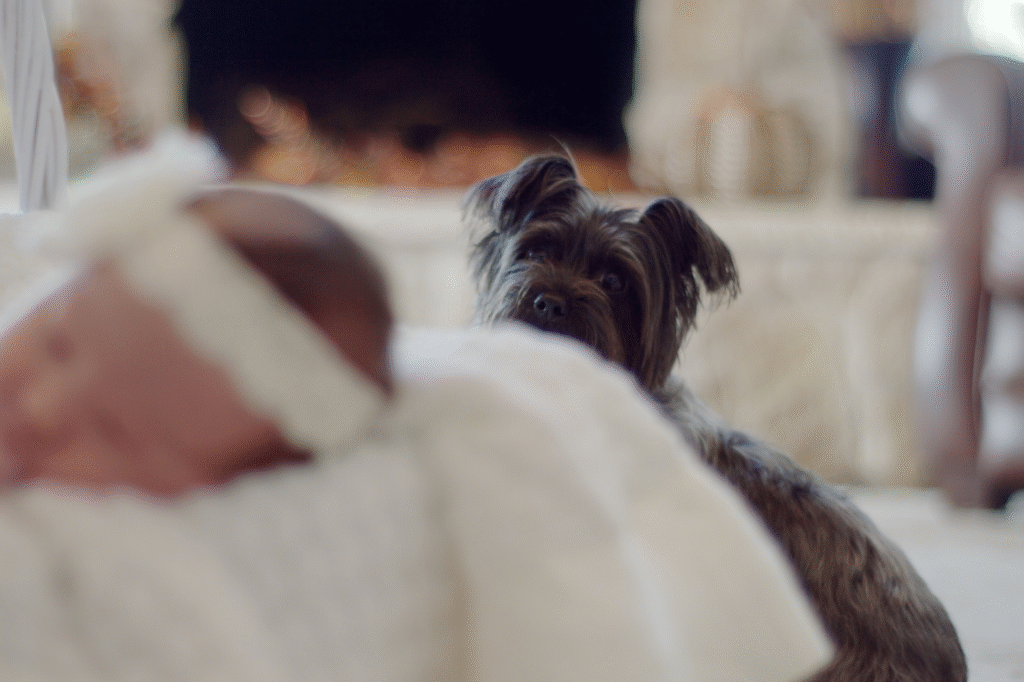Science shows dogs pick up on baby cries in ways we barely understand, and it is not always about noise.

Dogs seem to have their own rulebook when it comes to baby cries. Some rush over like superheroes, others retreat like someone set off fireworks. What they are actually detecting goes beyond the sound itself, tapping into instincts, smells, and emotional signals humans rarely notice. It turns out your dog’s reaction is not random but driven by a mix of primal survival coding and deep social awareness.
1. The pitch of a baby’s cry hits their ears differently.

As stated by the Journal of Comparative Psychology, dogs respond more strongly to high-pitched sounds, and baby cries fall right into that range. These frequencies trigger heightened alertness and can signal urgency in the canine brain.
This sensitivity is tied to survival instincts. Puppies in distress make similar sounds, so when a dog hears a human infant cry, it can mimic the emotional response they would have toward their own young. That primal link is what sends some dogs running to investigate and others pacing nervously around the house.
2. Chemical changes in the air tell them something is wrong.

According to research from the University of Bari Aldo Moro, dogs detect chemical shifts humans release under stress, often through sweat and breath. A crying baby changes the emotional tone of the entire room, and dogs literally smell it.
This chemical cue acts like a silent alarm, pulling their focus before you even notice they are alert. For some dogs, it creates a calming, protective instinct, while others interpret it as a warning and withdraw. Their noses tell them more than our ears ever could.
3. Emotional energy transfers directly to their nervous system.

As reported by Animal Cognition, dogs can sync emotionally with humans, a phenomenon known as emotional contagion. When caregivers feel stressed by a baby’s cry, dogs often mirror that heightened state.
This mirroring can result in barking, whining, or pacing as their bodies process the stress they absorbed. For more sensitive breeds, the emotional weight can be overwhelming, which explains why some dogs hide under beds or avoid the nursery entirely.
4. Instinct to guard vulnerable pack members kicks in.

In many dogs, baby cries awaken an innate urge to protect the most fragile member of their “pack.” This reaction can look like hovering near the crib, sleeping outside the nursery door, or barking at perceived threats.
That sense of duty is hardwired. Even dogs without formal guard training often display behavior that looks like caregiving. They treat babies as priority individuals, regardless of how long the baby has been in the household.
5. Some associate crying with negative experiences.

A dog exposed to loud noises or high-stress environments in the past may connect crying with discomfort. This conditioning often appears in rescue dogs or those with noise sensitivity issues.
These dogs sometimes leave the room, avoid eye contact, or even shake when they hear prolonged crying. Rebuilding positive associations through calm exposure and gentle reassurance can help shift these reactions over time.
6. They pick up on subtle body language cues you miss.

Dogs are masters of reading micro-expressions and body shifts in humans. When a baby cries, caregivers often tense up, move faster, or speak differently without realizing it. Dogs notice every tiny change.
This hyperawareness can dictate how they respond. A calm caregiver often means the dog remains calm too. Conversely, a stressed or frantic reaction sends dogs into alert mode, amplifying their own emotional state to match what they are witnessing.
7. Curiosity about new sounds drives investigation.

Some dogs simply treat a baby’s cry as an unfamiliar signal and want to investigate it thoroughly. They may tilt their heads, paw at the air, or nuzzle the baby as if trying to figure out what caused the sound.
This curiosity is not always tied to protection or fear—it is pure interest in something unusual. Over time, many dogs adapt to the noise and stop reacting, once their brains catalog the cry as normal background sound.
8. Social bonding intensifies their reaction.

Dogs with strong bonds to their families often feel deeply invested in every emotional event in the home. A baby’s cry acts like a beacon, pulling them into the moment because they want to be part of whatever is happening.
This is why some dogs choose to stay close, even licking a baby’s hands or face in a quiet show of solidarity. They interpret the sound as a family issue, one they want to witness or help soothe in their own way.
